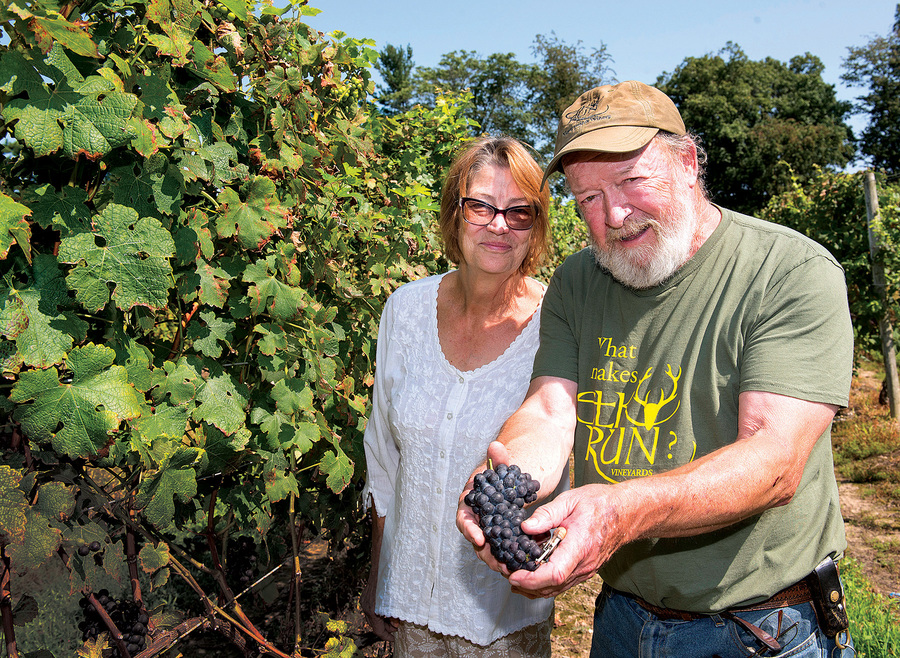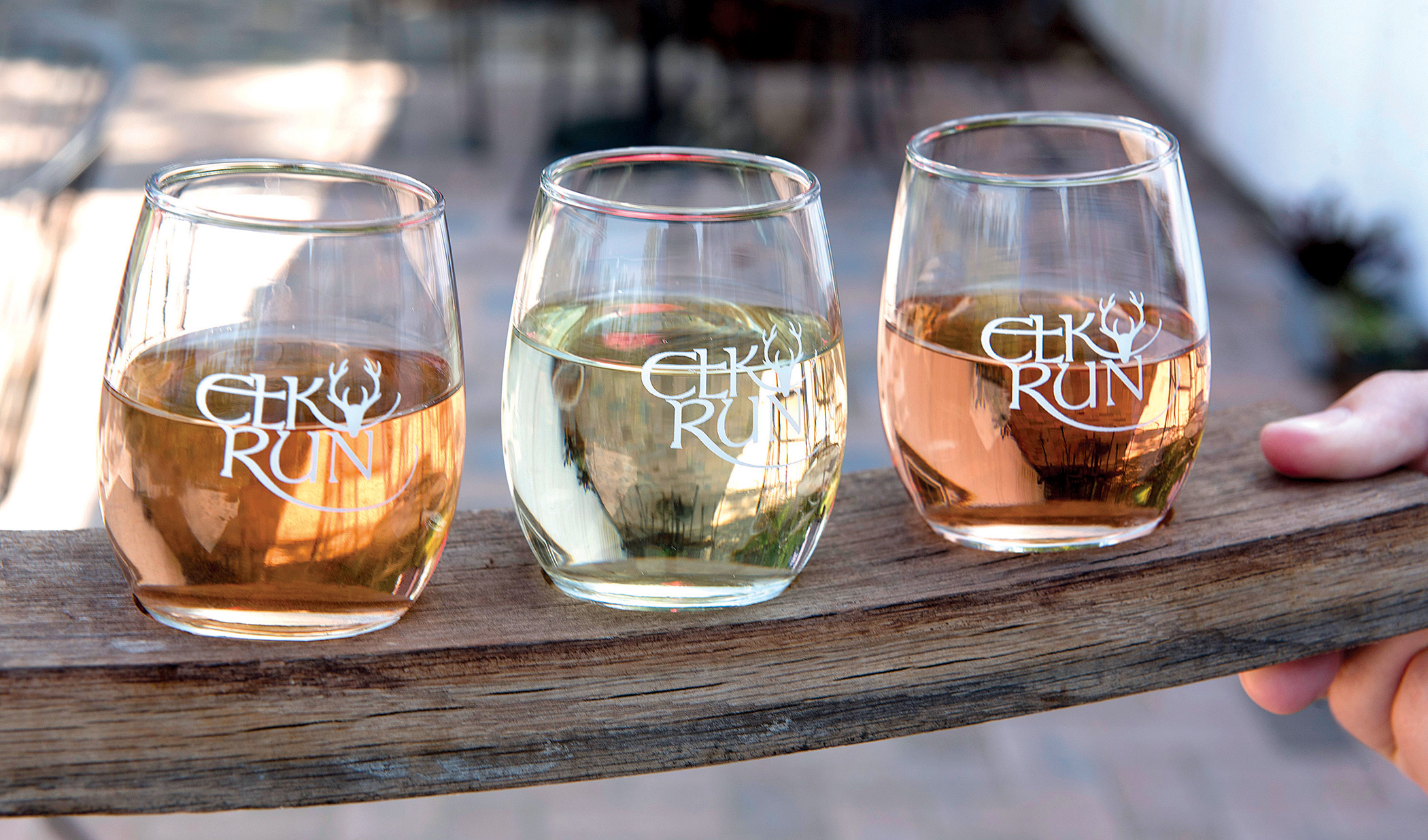
Photos by Bill Green
Elk Run Vineyards owners Carol and Fred Wilson hold a selection of Cabernet sauvignon grapes in the vineyard they have farmed for nearly 37 years.
“Growing grapes in the mid-Atlantic is tedious, but it can be done,” said Anthony Aellen, the vice president and winemaker for Linganore Winecellars in Mount Airy.
For the past 30 minutes, Aellen has been explaining, in detail, the challenges of making a great bottle of wine in Maryland. First and foremost is the climate — hot and muggy summers that hasten the growth of downy mildew and other plant pests. Rain is also a problem, added Joe Fiola, the specialist for viticulture and small fruit at the University of Maryland Extension. Too much rain in the winter can leach oxygen from the soil and make grapevines more sensitive to the cold. Too much in the summer and vines will grow too much, or grapes will absorb the excess water and burst.
“I was talking to a winemaker on the Eastern Shore and he’s gotten 20 inches of rain in the past month,” Fiola said wryly. “It’s difficult to grow any plant in those conditions.”
For more than 50 years, Maryland grape agriculturists have battled freezing winters, wet summers and growing labor costs in pursuit of a holy grail for many states — a booming wine industry that can attract tourists and expand the local economy.
Maryland now has 89 licensed wineries and just over 1,000 acres of planted grapes, and the consumption of Maryland wine has increased more than 10 percent every year over the past 10 years, according to Fiola and Kevin Atticks, the executive director of the Maryland Wineries Association. Still, the state’s industry pales in comparison to California’s, where there are around 45,000 acres of vineyards in Napa Valley alone.
The pressure to grow the industry continues to challenge Maryland grape growers and winery owners, who face obstacles that just aren’t present in other areas of the country. The challenging mid-Atlantic climate creates extra work for farmers, who generally have to prune their vines three or four times a season, Fiola said. In ideal conditions, growers wouldn’t have to do that at all. East Coast farmers are also forced to spray their grapes with fungicides somewhere between six and 14 times a season, while West Coast growers spray no more than six times.
“To make a great wine in Maryland, there’s just not a lot of room for error,” Fiola said. “The viticulture has to be impeccable. Ninety percent of it is doing things right in the vineyard.”
The labor involved with cultivating grapes has also created another problem in Maryland: a shortage in supply. Though the number of vineyards in Maryland has grown in the last 10 years, the number of wineries has grown even faster, creating a gulf when it comes to the demand for grapes.
Most wineries in the state that don’t grow their own plants still make an effort to buy grapes grown in Maryland, supplementing with grapes from nearby states when necessary, Aellen said. But a handful of winemakers continue to buy grapes from outside the state or even outside the country, importing precrushed concentrate from places such as Chile and Argentina. The trend is frustrating for winemakers who work to grow or who rely on Maryland fruit exclusively, striving to create an authentic Maryland wine industry, he said.
“If you buy grapes from Argentina, is it a Maryland wine?” Aellen said. “Hell no, it’s not. That taints all of us who are producing here and put in the dollars and the time and the effort to promote grape-growing in the state.”
On the plus side, fewer and fewer wineries rely on nonlocal grapes as the Maryland wine continues to take root, Fiola said. And in Frederick County, winemakers continue to grow and experiment with Old World vines and hybrid varieties.
Cabernet franc and chardonnay grow especially well in the county, as do other European varieties like the Spanish grape albariño. Old World grapes take a starring role at many of the region’s most popular wineries, including Elk Run Vineyards & Winery in Mount Airy.
“We made our reputation growing the classic grapes,” said Carol Wilson, a co-owner of the vineyard. “Vines like Cabernet Franc, Cabernet sauvignon, petit verdot. If you can make a Cabernet in Maryland, then you can really make a name for yourself.”
Old World grapes have also become a hallmark of the industry throughout the state, Fiola added. “I usually like to equate Maryland with Old World styles of wine like France and Italy,” he said. “The intensity and complexity of the wines we make are much more similar to Old World countries. Much more nuanced, much more food-friendly.”
